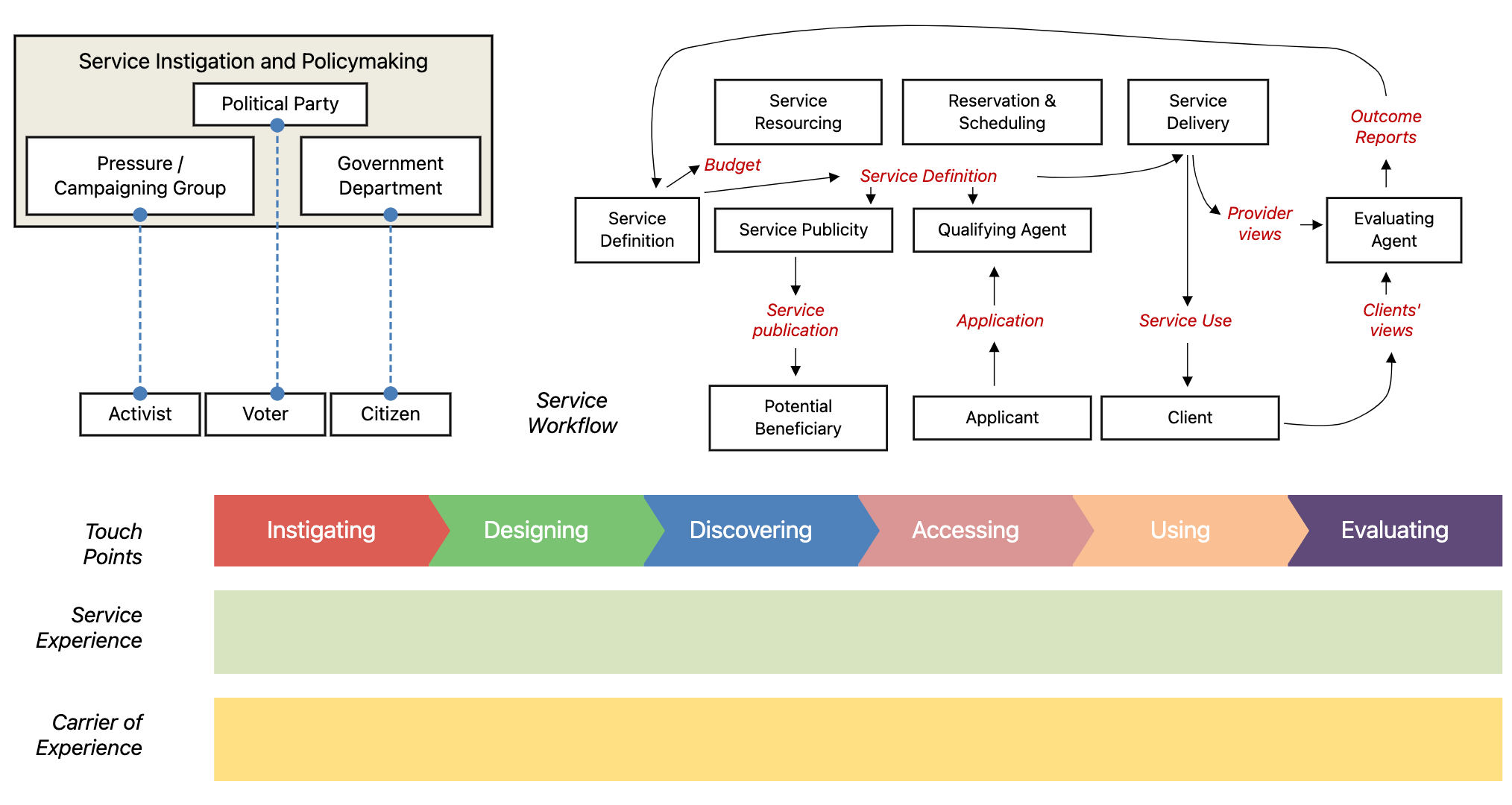User Journey Model
Social innovation processes are implied in the instigation, deployment and fruition of a service and can be seen as a combination of processes and as the interactions between roles and responsibilities. This is represented as follows:
Along the bottom of this model we see the Service Journey and immediately above this, the set of roles that a member of the public or a community could play in relation to the service. The remaining boxes represent the roles involved in instigating, designing, delivering and evaluating the service. In this modelling projection, the processes that are involved are conversational in nature; they involve the production of sets of information referred to by the red legends.
This model has been developed to augment the conventional user journey approach to encompass the concept of co-creation. The experience of “Touch Points” is no longer simply one of the evaluation of encounter and operation but one of participation and influence. Thus:
- Were you involved in the instigation of this service? If so, was this as an activist-driven, part of a political process or a civic one? What were the occasions? How do you evaluate the experience? If you did not, how much are you aware to the parties who did instigate the service?
- Were you involved in the definition and design of the service? The identification of the intended benefits and targeted priorities and beneficiaries? The way the service was targeted and communicated?
- How did you find out about the service and the possibilities to participate, influence (?) and to make use of it?
- What was your experience of the accessibility of the service and your rights to make use of it?
- How was the experience of using/participating in the service? Has the experience changed in any ways?
- What is your participation and experience in the evaluation of the service? Has the service changed as a result
These questions can be answered from the perspective of an individual service user/participant, their informal carer, a front line service deliverer, the administrative staff associated with the service or a front line manager, middle manager of a senior or political level individual. In aggregate, they provide a map of co-creation experience at the intersections between the service lifecycle processes and the personal experiences of participants.

